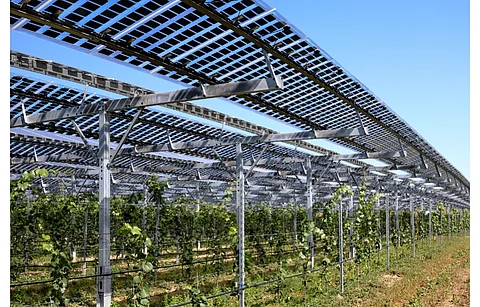

France has officially devised a framework to guide and support the development of ground-mounted solar PV projects on natural, agricultural or forest land. It has published these rules in the official gazette as Decree No. 2024-318.
While keeping agricultural activity as the prime focus, the government specifies that an agrivoltaic installation must not cover more than 10% of the total surface area of such land, barring livestock farming.
These installations must be installed at a height to allow inter-row spacing for normal operation on site, ensuring the passage of agricultural machinery and the safety of animals as well.
Agrivoltaic projects will be barred from coming up in agricultural zones that are protected under the country's rural and maritime fishing zones. It includes areas where agricultural and forestry land development has been shut for the last 10 years.
The rules are aimed to guide various stakeholders including municipalities and public inter-municipal cooperation establishments, decentralized state services, farmers, operators of installations using a terrestrial renewable energy source, and photovoltaic project leaders to plan and execute such facilities.
The provisions can be accessed in detail on the website of the French government's official gazette Legifrance.
Interest in agrivoltaic projects is on the rise in the country as it aims to install up to 100 GW of solar PV capacity by 2035, up from over 20 GW at the end of 2023 (see France's Cumulative Installed PV Capacity Exceeds 20 GW).
Recently, French yeast manufacturer Lesaffre turned offtaker for 34 GWh/year of solar energy from Qair's agrivoltaic project (see France's Qair Bags 18-Year Corporate Solar PPA Contract).
